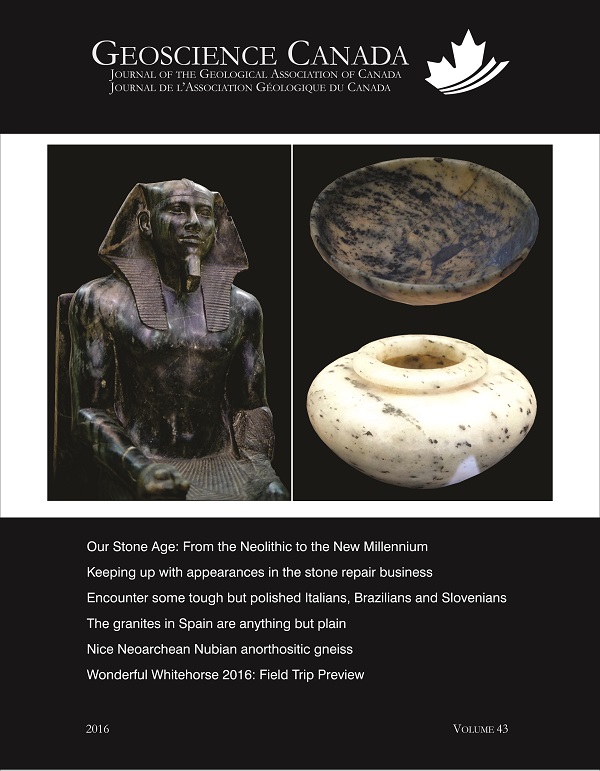Series
Heritage Stone 2. The Dora-Maira Unit (Italian Cottian Alps): A Reservoir of Ornamental Stones Since Roman Times
Publié-e 2016-03-14
Comment citer
Borghi, A., Cadoppi, P., & Dino, G. A. (2016). Heritage Stone 2. The Dora-Maira Unit (Italian Cottian Alps): A Reservoir of Ornamental Stones Since Roman Times. Geoscience Canada, 43(1), 13–30. https://doi.org/10.12789/geocanj.2016.43.084
Résumé
The Dora-Maira Unit is a geological unit cropping out in the inner part of the Cottian Alps and belonging to the Penninic Domain of the Western Alps (northwestern Italy). It consists of a Paleozoic basement and its Mesozoic carbonate cover, metamorphosed under eclogite facies conditions in the Cenozoic. Due to the complexity of the rock associations and the textural-metamorphic transformations, the Dora-Maira Unit has been a source of ornamental stones over the centuries, and still represents a reservoir of material locally employed for historical and contemporary buildings. Several varieties of orthogneiss, quartzite and marble, derived from the Paleozoic basement and Mesozoic cover, are known by different local names (e.g. Luserna Stone, Borgone and Vaie Stone, Perosa Stone, Bargiolina Quartzite, Foresto and Chianocco Marble).These stones were largely employed during the 17th and 18th centuries for some of the most famous and important monuments in Turin (capital of Piedmont region, northwestern Italy), as well as in the countryside, since Roman times. Some of the materials exploited in the Dora-Maira Unit were also exported to foreign countries: Borgone and Vaie Stone were used for the paving of the Louvre Museum, and Perosa Stone was employed for the construction of the monument of Independence in Lagos, Nigeria. Consequently, the Dora-Maira Unit can be designated as a Global Heritage Stone Province.RÉSUMÉ
L’Unité Dora-Maira est une unité géologique affleurant dans la partie interne des Alpes Cottiennes; elle appartient au Domaine Penninique des Alpes occidentales (Italie du Nord-Ouest). Elle se compose d'une croûte continentale d’âge Paléozoïque supérieur et de sa couverture carbonatique Mésozoïque, métamorphosées en faciès éclogite pendant le Cénozoïque. En raison de la complexité des associations lithologiques et des transformations métamorphiques et structurelles, l’Unité Dora-Maira a été une source de pierres ornementales au cours des siècles, et encore il représente un réservoir de matériau employé localement pour des bâtiments contemporains et historiques. Plusieurs variétés de gneiss, de quartzite et de marbre, provenant du socle paléozoïque et de la couverture mésozoïque et connues sous différents noms locaux (par exemple Pierre de Luserna, Pierre de Borgone et Vaie, Pierre de Perosa, Bargiolina, marbres de Foresto et Chianocco), étaient largement utilisées pour certains monuments les plus célèbres et importants à Turin (capitale de la région Piémont), au cours des 17ème et 18ème siècles, et dans les alentours de la ville depuis l'époque romaine. Certains des matériaux exploités dans l'Unité Dora-Maira ont été également exportés aux pays étrangers: la Pierre de Borgone et Vaie a été utilisée pour le pavage du Musée du Louvre, et la Pierre de Perosa a été employé en Afrique, à Lagos, au Nigéria, pour la construction du monument de l'indépendance. Par conséquent, l'Unité Dora-Maira peut être indiquée comme une Pierre Province du patrimoine mondial.
